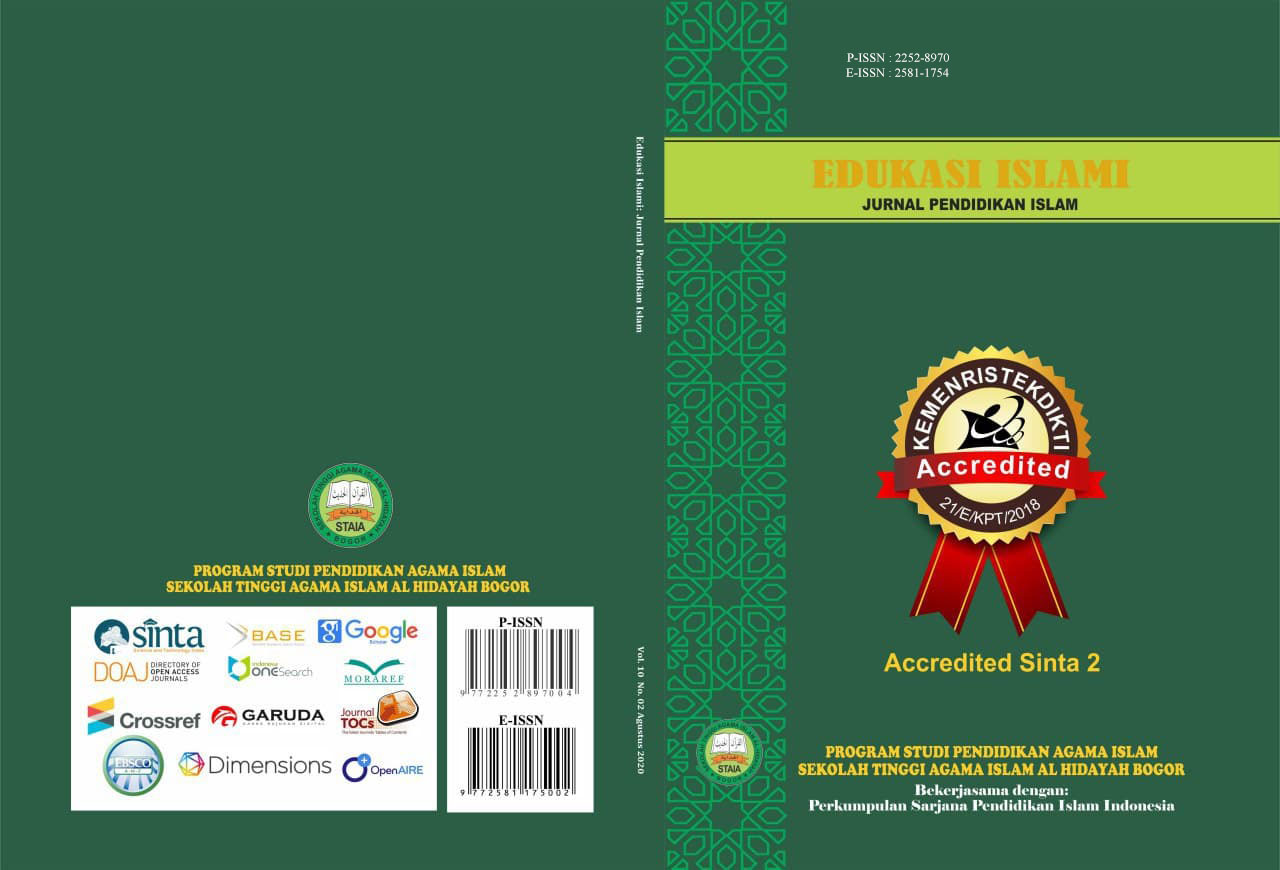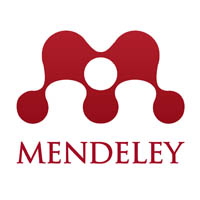NEED ANALYSIS OF INDONESIAN TEACHING MATERIALS AT ISLAMIC RELIGIOUS UNIVERSITIES
DOI:
https://doi.org/10.30868/ei.v11i01.3781Keywords:
Need Analysis, Teaching Material, Indonesian language, Islamic religious universitiesAbstract
The instructional materials have a significant impact on the learning process. This study aimed to determine the demand for Indonesian language teaching materials in Indonesian Islamic religious colleges. This study was conducted at the Palopo State Islamic Institute with the participation of 2018 madrasah ibtidaiyah teacher education program students who had attended Indonesian language lectures the previous semester. This study included 84 students and six instructors of the Indonesian language. This survey-based study employs a qualitative descriptive design. In the form of questionnaires, observations, and interview guidelines, data collection instruments. The data were analyzed qualitatively and descriptively. According to a study, students and professors require textbooks incorporating Islamic perspectives. Therefore, the curriculum includes Islamic history texts, lectures or sermons, Quranic and Hadith verse quotations and translations, articles, and Islamic literary works. These findings can be considered when developing Indonesian language instructional materials for IAIN Palopo and other Indonesian Islamic religious universities.
References
Arum, D. P., Nurhayati, E., Anggraeni, N. D., & Hanik, S. U. (2022). Peningkatan Hasil Belajar Mahasiswa melalui Pemanfaatan Video Animasi pada Mata Kuliah Bahasa Indonesia di UPN Veteran Jawa Timur (Improving Student Learning Outcomes through the Utilization of Animation Videos in Indonesian Language Courses at UPN Veterans East Java). Jurnal Pendidikan Dan Konseling, 4(2), 81–91. https://doi.org/10.31004/jpdk.v4i2.3908
Bolognani, M. (2007). Islam, Ethnography, and Politics: Methodological Issues in Researching amongst West Yorkshire Pakistanis in 2005. International Journal of Social Research Methodology, 10(4), 279–293. https://doi.org/10.1080/13645570701546570
Christanti, R., & Sukoco, A. A. (2022). Freedom to Learn--Independent Campus Policy: Do We Really Find Our Freedom? Journal of Education and Learning (EduLearn), 16(2), 189–198.
Chuntala, A. D. W. (2019). Saintific Approach in 21st Century Learning in Indonesian Language Learning Vocational School of Pharmacy. International Journal of Active Learning, 4(2), 71–77.
Coles, & Irfan, M. (2004). Education and Islam: A new strategic approach. Race Equality Teaching, 22(3), 41–46.
Creswell, J. (2015). Riset Pendidikan: Perencanaan, Pelaksanaan, dan Evaluasi Riset Kualitatif & Kuantitatif (Educational Research: Planning, Implementation and Evaluation of Qualitative & Quantitative Research). Pustaka Pelajar.
Dewantara, I. P. M., Suandi, I. N., Rasna, I. W., & Putrayasa, I. B. (2019). Cultivating Students' Interest and Positive Attitudes towards Indonesian Language through Phenomenon-Text-Based Information Literacy Learning. International Journal of Instruction, 12(2), 147–162.
Dewi, S. S., Sutrisno, S., & Madjid, A. (2020). The Interconnectedness of Religiosity and Teachers' Efficacy in The Character Education in Indonesian Islamic Integrated School. European Journal of Social Sciences Studies, 5(3), Article 3. https://doi.org/10.46827/ejsss.v5i3.877
Diana, P. Z., & Wirawati, D. (2020). Analisis Kebutuhan Pengembangan Buku Ajar Komprehensi Lisan Berbasis Nilai-Nilai Islam dan Berorientasi Literasi Digital (Analysis of the Need for Development of Oral Comprehensive Textbooks Based on Islamic Values and Oriented to Digital Literacy). Jurnal Pendidikan Bahasa Indonesia, 8(2), 170–179. https://doi.org/10.30659/j.8.2.170-179
Fitraini, D., & Andriani, L. (2020). Pengembangan LKS Berbasis Model Pembelajaran REACT Terintegrasi Nilai Keislaman untuk Siswa MTs Kabupaten Kampar (Development of LKS Based on Integrated REACT Learning Model Islamic Values for MTs Students in Kampar Regency). Suska Journal of Mathematics Education, 6(2), 079–088. https://doi.org/10.24014/sjme.v6i2.10654
Gonzalez, S., & Orlando, F. (2020). Subjective Needs Analysis: A Vital Resource to Assess Language Teaching. MEXTESOL Journal, 44(3). https://eric.ed.gov/?q=need+analysis&id=EJ1311185
Gumelar, P. C., & Santosa, S. (2022). Nilai Estetika Buku Teks Kurikulum 2013 Edisi Revisi 2019 Kelas I Ditinjau Dari Persepsi Guru MIN 1 Bantul (Aesthetic Values of Curriculum Textbook 2013 Revised Edition 2019 Class I Judging from Teacher Perceptions MIN 1 Bantul). Al-Aulad: Journal of Islamic Primary Education, 5(1), 46–56. https://doi.org/10.15575/al-aulad.v5i1.10848
Hamsiah, H., Tang, M. R., Tolla, A., & Jufri, J. (2017). Teaching Materials Development for Basic General Course of Indonesian Language Class Based on Culture Values Elompungi (Elong) Bugis Literature. Journal of Language Teaching and Research, 8(2), 278–285. https://doi.org/10.17507/jltr.0802.08
Haris, H. (2012). Metodologi Penelitian Kualitatif untuk Ilmu-Ilmu Sosial (Qualitative Research Methodology for Social Sciences). Penerbit Salemba Humanika.
Helaluddin. (2018). Analisis Kebutuhan dalam Redesain Silabus (RPS) Mata Kuliah Bahasa Indonesia di Perguruan Tinggi (Needs Analysis in Redesigning the Syllabus (RPS) of Indonesian Language Courses in Higher Education). Jurnal Gramatika: Jurnal Penelitian Pendidikan Bahasa Dan Sastra Indonesia, 4(1), 85–103. https://doi.org/10.22202/jg.2018.v4i1.2464
Ikhwan, A. (2016). Perguruan Tinggi Islam dan Integrasi Keilmuan Islam (Islamic Universities and Integration of Islamic Sciences): At-Tajdid: Jurnal Ilmu Tarbiyah, 5(2), 159–187.
Jamal, N. (2017). Model-Model Integrasi Keilmuan Perguruan Tinggi Keagamaan Islam (Models of Scientific Integration of Islamic Religious Universities). KABILAH : Journal of Social Community, 2(1), 83–101. https://doi.org/10.35127/kbl.v2i1.3088
Katalayi, G. B., & Sivasubramaniam, S. (2015). The Construct Validity of a Reading Test Based on Narrative Texts. Journal of Language Teaching and Research, 6(1), 21–29. https://doi.org/10.17507/jltr.0601.03
Khoirudin, M. (2019). Pengembangan Modul Pembelajaran IPA Biologi Berbasis Scientific Approach Terintegrasi Nilai Keislaman Pada Materi Interaksi Antar Makhluk Hidup Dengan Lingkungan (Development of Biology Science Learning Module Based on Integrated Scientific Approach Islamic Values on Interaction Materials Between Living Things and the Environment). IJIS Edu : Indonesian Journal of Integrated Science Education, 1(1), 33–42. https://doi.org/10.29300/ijisedu.v1i1.1403
Liakopoulou, M. (2011). Teachers' Pedagogical Competence as a Prerequisite for Entering the Profession. European Journal of Education, 46(4), 474–488. https://doi.org/10.1111/j.1465-3435.2011.01495.x
Libiawati, D., Indihadi, D., & Nugraha, A. (2020). Analisis Kebutuhan Penyusunan Buku Ajar Mata Pelajaran Bahasa Indonesia Berbasis Menulis Teks Eksplanasi (Analysis of the Needs for Preparation of Indonesian Language Textbooks Based on Writing Explanatory Texts). PEDADIDAKTIKA: Jurnal Ilmiah Pendidikan Guru Sekolah Dasar, 7(2), 77–82.
Lotaningrat, D. (2019). Pengembangan Bahan Ajar IPA Terpadu pada Tema Kelistrikan pada Makhluk Hidup Dengan Menggunakan Metode Four Step Teaching Material Development (4STMD) [Development of Integrated Science Teaching Materials on the Theme of Electricity in Living Things by Using the Four Step Teaching Material Development Method (4STMD)]. didaktik : jurnal ilmiah pgsd stkip subang, 5(1), 80–96. https://doi.org/10.36989/didaktik.v5i1.86
Malahayati, E. N., & Zunaidah, F. N. (2021). Analisis Kebutuhan Bahan Ajar Mata Kuliah Kurikulum (Analysis of Curriculum Course Teaching Material Needs). Jurnal Basicedu, 5(6), 6218–6226. https://doi.org/10.31004/basicedu.v5i6.1802
Mulyaningsih, I. (2017). Sikap Mahasiswa terhadap Bahasa Indonesia (Student's Attitude towards Indonesian). Indonesian Language Education and Literature, 3(1), 79–87. https://doi.org/10.24235/ileal.v3i1.1525
Nurgiyantoro, B., & Efendi, A. (2017). Re-actualisation of Puppet Characters in Modern Indonesian Fictions of the 21st Century. 3L: Language, Linguistics, Literature®, 23(2), Article 2. https://doi.org/10.17576/3L-2017-2302-11
Panggabean, N. H., & Danis, A. (2020). Desain Pengembangan Bahan Ajar Berbasis Sains (Science-Based Teaching Material Development Design). Yayasan Kita Menulis.
Pedoman Penyusunan Kurikulum Pendidikan Tinggi dan Penilaian Hasil Belajar Mahasiswa (Guidelines for Preparation of Higher Education Curriculum and Assessment of Student Learning Outcomes). (2000). http://simpuh.kemenag.go.id/regulasi/kepmendiknas_232_00.pdf
Pradita, A. A., Ramadhan, S., & Asri, Y. (2018). Development of a Learning Module of Writing Debate Text-based Problem Based Learning (PBL). 217–222. https://doi.org/10.2991/iclle-18.2018.36
Richards, J. C. (2013). Curriculum Approaches in Language Teaching: Forward, Central, and Backward Design. RELC Journal, 44(1), 5–33. https://doi.org/10.1177/0033688212473293
Rozak, R. W. A., Suabuana, C., Kembara, M. D., & Islamy, M. R. F. (2021). Integrasi Nilai-Nilai Pendidikan Sosial-Budaya dalam Pendidikan Bahasa Indonesia (Integration of Socio-Cultural Educational Values in Indonesian Language Education). Semantik, 10(1), 11–24. https://doi.org/10.22460/semantik.v10i1.p11-24
Sakkir, G., Dollah, S., Arsyad, S., & Ahmad, J. (2021). Need Analysis for Developing Writing Skill Materials Using Facebook for English Undergraduate Students. International Journal of Language Education, 5(1), 542–551. https://doi.org/10.26858/ijole.v5i1.14856
Sugiyono. (2010). Metode penelitian kuantitatif dan R&D (Quantitative research methods and R&D). Alfabeta.
Supriyanto, E. (2017). Perancangan Kurikulum Khusus Boarding School Untuk Keunggulan Madrasah di Jawa Timur (Boarding School Special Curriculum Design for Madrasah Excellence in East Java). http://publikasiilmiah.ums.ac.id/handle/11617/9737
Susilana, R., & Riyana, C. (2009). Media Pembelajaran: Hakikat,Pengembangan,Pemanfaatan,dan Penilaian (Learning Media: Nature, Development, Utilization, and Assessment). CV.Wacana Prima.
Tuerah, R. M. S., & Monigir, N. (2019). Organizing Natural Science Lesson Materials in Primary School. 490–492. https://doi.org/10.2991/ictvet-18.2019.112
Downloads
Published
Issue
Section
Citation Check
License
Authors who publish with this journal agree to the following terms:
- Authors retain copyright and grant the journal right of first publication with the work simultaneously licensed under a Creative Commons Attribution License that allows others to share the work with an acknowledgment of the work's authorship and initial publication in this journal.
- Authors are able to enter into separate, additional contractual arrangements for the non-exclusive distribution of the journal's published version of the work (e.g., post it to an institutional repository or publish it in a book), with an acknowledgment of its initial publication in this journal.
- Authors are permitted and encouraged to post their work online (e.g., in institutional repositories or on their website) prior to and during the submission process, as it can lead to productive exchanges, as well as earlier and greater citation of published work (See The Effect of Open Access).









